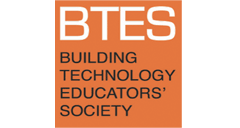A Student-Centered Active Learning Approach to Teaching Structures in a Bachelor of Architecture Program
DOI
https://doi.org/10.7275/na8x-dv75
Abstract
Nearly all programs of architecture focus on structures as independent coursework, rather than on integrating pedagogy (i.e. how to teach structures in studio). To fill this gap, an innovative freshman workshop was developed in this study with a student-centered active learning approach to teach structures. In the present study, this approach combines three types of active learning activities: think-pair-build; in-class, all comrades’ shared discussions and review; and articulated student development reflections. The primary vehicle used for discovery is the Workshop Method. By focusing primarily on student’s own creative genre (small group designs), the class responds to what is brought into the one period focus. Workshops are devoted to critiquing work, to generating new work through guided exercises and assignments, and to incorporating a combination of both approaches for instilling intellectual habits. This approach implemented and assessed in three workshops in a freshman studio (three semesters) at the Division of Architecture, University of Oklahoma by architectural and structural faculty and their graduate assistants.
The results show that this method was a fairly successful structures introduction into architectural form, not previously considered. Specifically, in pre-structure workshop survey, student observations on structural components not reflected. Later, in post-structure workshop surveys, much is retained from structural information from the two workshops. Then, by faculty observation, in final end-of-the-year studio reviews, studio projects demonstrated structure patterns in comparison to previous years’ form-only outcomes. It is assumed that the structural activities in studio provided the students with added reinforcement in understanding how structural components work in design. From this first trial run, results prove integrating workshops and active-student learning techniques early influence students’ knowledge and understanding of structures. Further research currently conducted to follow these freshmen students through their second-year matriculation in the program. The study will examine if these same architecture students: (1) retain and use structures in their designs long before they actually take traditional structure curriculum coursework in their third year; and (2), if structural components appear in their work. This study implies that the most effective method for students to learn how to develop an integral structural process in their work (pattern and strategy) is learning by doing in freshman studio.
Recommended Citation
Callahan, Marjorie; Shadravan, Shideh; Obasade, Yetunde; and Hasenfratz, Elizabeth
(2019)
"A Student-Centered Active Learning Approach to Teaching Structures in a Bachelor of Architecture Program,"
Building Technology Educator's Society: Vol. 2019
Caryn Brause, Peggi L. Clouston, Naomi Darling (Eds.), Amherst, MA, 2019.
https://doi.org/10.7275/na8x-dv75
Available at:
https://scholarworks.umass.edu/btes/vol2019/iss1/20

